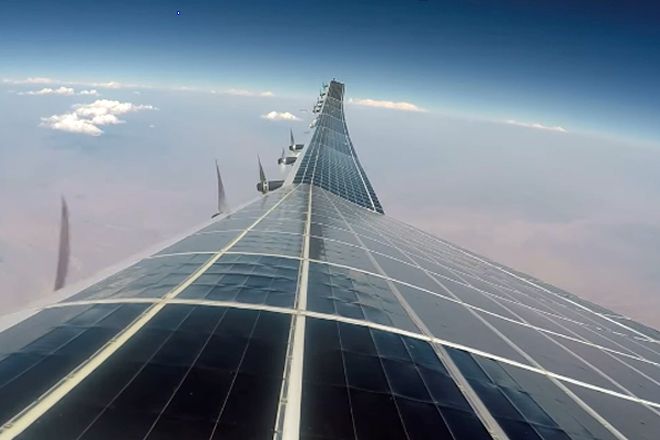Sunglider takes to the stratosphere
These unmanned aircraft could soon be floating around the stratosphere to bridge the digital divide.

Is it a bird, is it a plane? No it’s a solar-powered phone tower.
These unmanned aircraft could soon be floating around Earth’s stratosphere to help bridge the gap for the world’s digital divide.
In what’s been hailed as a new frontier for mobile networks, the Sunglider – a solar-powered stratospheric telecommunications platform – has been created to deliver internet access to under-serviced communities in rural and remote areas.
Sunglider’s makers say the success of the latest test flight in late September was the culmination of three years of development and represented a major step forward in their mission of internet inclusion.
During the test flight, Sunglider successfully reached the stratosphere and while floating there connected four participants in New Mexico, Tokyo, Mountain View, California and Washington, DC in a high-resolution video conference via mobile phone.
Sunglider was developed by HAPSMobile, a subsidiary of Japanese telco SoftBank Corp, US unmanned aircraft developer and minority-owner AeroVironment, and Loon, a subsidiary of Alphabet (parent company of Google) which collaborated on the communications technology.
"We once again moved one step closer to our goal of building a base station that floats in the sky solely on solar energy."

HAPS stands for High Altitude Platform Station and HAPSMobile focuses its efforts on researching, developing and constructing new telecommunications networks and equipment.
“We once again moved one step closer to our goal of building a base station that floats in the sky solely on solar energy,” says Junichi Miyakawa, president & chief executive of HAPSMobile. “Even though the temperature fell below 73 degrees Celsius, our work on endurance tests bore fruit and resulted in a successful test flight.”
Loon’s chief executive Alastair Westgarth says: “By developing technologies to harness the opportunity of the stratosphere, we are making progress toward our shared goal of connecting unconnected and under-connected populations around the world.”
The tech
Sunglider floats with stability in the stratosphere – a layer of Earth’s atmosphere that lies between the troposphere and the mesosphere – where the weather is less turbulent. This latest test flight took place in New Mexico on 21 September, and it reached an altitude of 62,500 feet (19 kilometers).
The glider spent more than five and a half hours in the stratosphere during its 20-hour flight, powered only by a battery and solar power. Using smartphones connected to the internet through the payload in the stratosphere, staff members from the companies collaborating on Sunglider – Loon and AeroVironment – successfully made a video call to HAPSMobile staff members in Japan.
Sunglider will continue to be tested at Spaceport America – the first purpose-built commercial spaceport in the world – over the next few years as its developers seek to acquire FAA certification for the aircraft.
Who funds it?
Sunglider is a collaboration between HAPSMobile which is a subsidiary of Japanese telco SoftBank Corp, aircraft developer AeroVironment, and Loon, a subsidiary of Alphabet, the parent company of Google.
Is it ready to roll?
Sunglider will continue to be tested at Spaceport America – the first purpose-built commercial spaceport in the world – over the next few years as its developers seek to acquire FAA certification for the aircraft.





